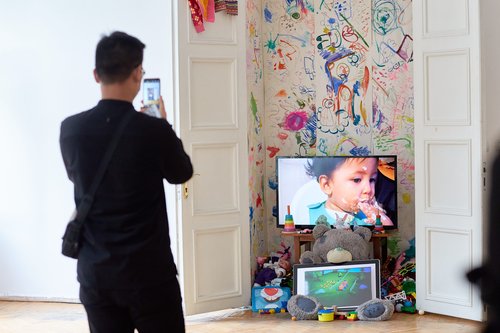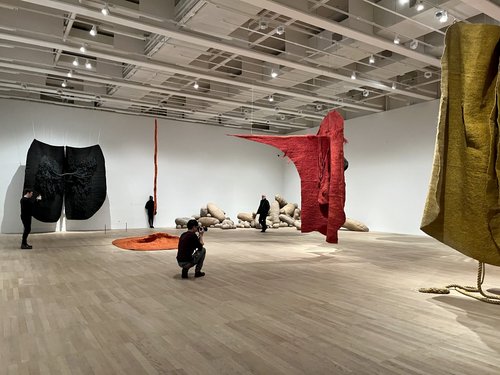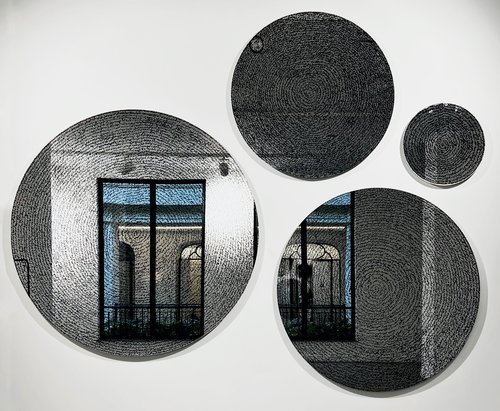Gulnur Mukazhanova and the Shadows of Totalitarian Past

Portrait of Gulnur Mukazhanova. Image from Manshuq website
Seen through an idiosyncratic and innovative fusion of tradition and contemporaneity, artist Gulnur Mukazhanova’s solo exhibition ‘Shadows of Hope’ in the Aspan Gallery in Almaty explores Kazakhstan's sociopolitical landscape and its struggles in forming a post-soviet identity.
Gulnur Mukazhanova (b. 1984) is one of Kazakhstan’s best-known artistic exports. In 2007, still in her early 20s she took part in the 52nd Venice Biennale and the following year settled in Berlin where she graduated from the Weissensee Academy of Art, a launchpad for what has become since a successful international career, her work often featuring in exhibitions throughout Europe, Russia, and the USA.
Throughout these years of emigration, Mukazhanova has continued to nurture close connections with her native Kazakhstan and her work often analyzes political and sociocultural processes in the country, as well as focuses on wider issues of globalization and identity politics. Her solo exhibition at the Aspan Gallery in Almaty consists of just one monumental work: a 41-metre-long canvas displayed around the main space in the gallery. It depicts a panorama of Kazakh society as it was during the period of independence. Mukazhanova introduces doubt into the success and trajectory of this painful quest as she sums up the spiritual essence of this fledgling country by way of the title she has chosen for the show: ‘Shadows of Hope’.
Felt plays a special role in Mukazhanova's art. It is a material she learned to work with while studying at the Zhurgenov Academy of Arts in Almaty and once she left Kazakhstan, it consciously became even more central to her artistic practice. Felt is a traditional material used by Central Asian nomads, used primarily to make carpets, clothing and yurts. The artist’s concern is not simply to passively reproduce traditional models from the past rather, she borrows the material, techniques, and principles of the tradition, while making clear that her ornament is not mere decoration but a language to make sense of surrounding reality and traditional and contemporary elements are closely intertwined in her work.
Her paintings from the ‘Post-Nomadic Reality’ series draw inspiration from tuskiiz carpets while echoing the style of a Rothko canvas. In this series, the artist has deliberately omitted ornaments, the emptiness in their place becoming a lost, ‘dead’ language. She sets up a sort of drowsy oblivion within contemporary Kazakh society, which on the one hand juggles with simulacra of national values but on the other seeks neither to engage deeply with cultural traditions nor reinterpret them for the present day. Works from this series were shown at the Aspan Gallery three years ago and ‘Shadows of Hope’ was conceived as a continuation.
Mukazhanova first worked on ‘Shadows of Hope’ during an art residency in Hong Kong. The monumental felt work she created there consisted of two 16-metre canvases which faced one another, a visual representation of “the dialogue and resistance between Chinese and Kazakh cultures”. Later, the Kazakh canvas was brought to Almaty where Mukazhanova extended it, explaining: “The canvas itself demanded continuation. You might have noticed a large red area on one edge. This is an unfinished background. It symbolises the incompleteness of the story. I decided to continue it from that point onwards.” She exhibited the work in London in 2022 where she added a new horizon line, the work is continually evolving. In Almaty the work has a torn horion line which is for her a metaphor for the fractured society of post-Soviet Kazakhstan, its unresolved Soviet traumas, and fears. “The country could already be standing on its own two feet. Culture could be flourishing, and people could be doing more than just surviving. But we are destroying everything our ancestors left us.”
Viewers find themselves walking along the length of the canvas, examining it in different fragments, metaphorically traversing the path of Kazakh society during the period of independence. The abundance of rounded elements that freely appear to float in the red background, the pleasing colour combinations, and a smooth, tranquil rhythm combined with the energy of the colour scheme is reminiscent of Wassily Kandinsky’s (1866–1944) works from the 1910s. Stylistically the part Mukhazhanova added later has different associations, echoing works by Helen Frankenthaler (1928–2011), semi-abstract landscapes by Emil Nolde (1867–1956), and Edvard Munch (1953–1944). Gaps in the ‘horizon’ create disturbing pauses and interruptions with disharmonious contrasting colour combinations. Both parts, old and new seem disconnected with brighter fragments placed beside pale ones. Each part of the composition is intentionally imbalanced. The fragmentation creates a sense of chaos.
The Kandinsky-inspired canvas on the right-hand side stands for a space of dreams, the Kazakhstan of possibilities, as it was imagined at the time of gaining independence. But this Kazakh utopia is replaced by the real path of the nation showing a fractured society, a space of mutual distrust with everyone against everyone else. It is the natural consequence of the authoritarian habits, beliefs, and communication models of the ‘Soviet person’, the late-Soviet disillusionment with values, and the bandit capitalism of the 1990s. The authoritarian regime of Nursultan Nazarbayev was interested in preserving this fragmentation.
At the end of the exhibition the artist leaves the visitors with an epilogue: a small canvas dominated by the colour black. This is a colour the artist tries mostly to avoid, she used it in this work, she explains, as a way of trying to accept her fear. “I’m talking about the traumas of our ancestors, which are passed down from generation to generation and manifest themselves in our everyday and intimate situations,” the artist says. “We often hear: ‘Keep quiet.’ I heard this from my grandmother, my mother, and other relatives. This ‘keep quiet’ is the fear we continue to live with. And it still rules the people.” The ‘Shadow of Hope’ is a spiritual panorama of post-Soviet Kazakhstan, revealing the country’s post-colonial and post-totalitarian problems. On the one hand, Mukazhanova shows the difficulty of reassembling national traditions from which Kazakhs were alienated by Soviet rule. On the other, she shows that society is still steeped in old authoritarian habits. True independence can only be achieved when these are understood and overcome.



























